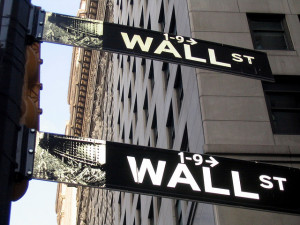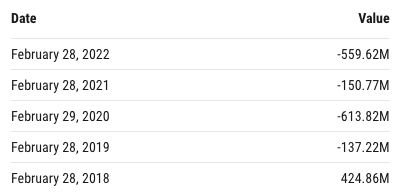Getting Punched in the Face by Bed Bath & Beyond Stock Trading: Lessons Learned
Here is the stock price change for Bed Bath & Beyond for 8/19/22:
Down over 40% for the day.
As they saying goes: “I don’t wish this upon my worse enemy”- I don’t take pleasure in pointing this out. However, there are some lessons to be learned about stock market risks with this insane level of volatility.
Contents
Don’t Juggle Chain Saws
You probably seen people juggling lots of dangerous objects, including fire sticks and chains saws that are running. Some people have this ability- and the proper training not to hurt themselves.
Technology now allows investors (and maybe thrill seekers) the ability to trade stocks easily- and stock market risk management may get ignored. Robinhood and other trading platforms provide mobile phone access to the markets. Add to this dozens of outlets providing content on the meme stock craze, and you have a perfect storm of stock market risk. Hey, a student made $110 million trading the stock!
This obviously bright student understands the Greater Fool Theory.
Join Conference Room: More content on accounting, personal finance, and humor/ short story topics. Video, blog posts.
Don’t Be the Greater Fool
Investopedia states that the Greater Fool Theory “argues that prices go up because people are able to sell overpriced securities to a “greater fool,” whether or not they are overvalued. That is, of course, until there are no greater fools left.”
Investment risk can be reduced if you’re educated, and pay attention to market risk. If the broad market (say, the Standard and Poor’s 500 Index) declines, that increases the risk that an individual stock price will also decline. The stock market risk premium increases, when you trade a stock with huge swings in value. This situation illustrates risk vs. reward investing.
Another investor who may have taken advantage of a whole bunch of fools is Ryan Cohen. According to Yahoo Finance:
“Retail traders were quick to flock to the side of Chewy Inc (NYSE: CHWY) founder and GameStop Corp (NYSE: GME) chair Ryan Cohen when he purchased a stake in Bed Bath & Beyond Inc (NASDAQ: BBBY) in March.
Less than six months later, Cohen has filed intent to sell his stake in the embattled retailer and accusations are flying. One institutional investor has suggested that Cohen used retail investors to pump the stock for his own benefit.”
Who knows if these allegations are true- the point is that people seem to be buying and selling this stock in huge quantities. The question is why?
Does the Company Make Money?
Here’s Bed Bath & Beyond’s recent income statement performance:
4 consecutive years of losses. The point is that there’s no fundamental reason to drive the price up 40%- which is why a decline of 40% makes total sense. What is investment risk? In this case, it’s pure speculation. If you understand how stocks are traded (this link), you can understand how a trader with a big position can dump all the shares into the market, and the stock price plummets.
I think a great deal of the speculation mindset is about impatience.
A Smoker’s Flight to Italy
I was on a 9 1/2 hour flight from New York to Italy this summer, and walked into the restroom. I saw an empty pack of Nicorette gum in the trash.
If you’re a smoker, 9 1/2 hours is a long time to wait. Add in boarding, waiting for takeoff, taxing, and exiting the plane, and you’re talking close to 11 hours.
That would cause anxiety- and frustration. Heck, I was annoyed by the process- and I don’t smoke.
Making investment decisions can be a frustrating process. Two big factors make the process difficult. First, world markets are becoming more interconnected. Second, the sheer amount of data you can access is overwhelming. Use these tips to reduce stock market risks and volatility.
You know you should do it
All of us have things in life we know we should do- but sometimes disregard. We all should diet, exercise, do things in moderations, etc. There’s a simple action that any investor can take to improve stock market risk management and to assess volatility. But many of us don’t-or won’t do it.
We don’t diversify our portfolios.
Why don’t we? Maybe because it’s boring. If we diversify, the overall investment performance of the portfolio is less volatile. The roller coaster of investment risk (price fluctuations) is not quite as steep- up or down.
While we gain a less volatile portfolio, we lose some potential upside. You may have attended parties in the late 1990s and heard from people who were getting great rates of return from tech stocks. If those investors were not diversified, however, they took a big hit when tech stocks sharply declined.
Three risks minimized by diversification
This 2015 Wall Street Journal article explains 4 risks in the markets (hint: they still apply today), and I’ll address three of them. Consider how a diversified portfolio can reduce these risks:
#1- A few tech stocks with big influence
Large, publicly traded tech stocks get a huge amount of attention. CNBC has a daily show that focuses on tech stocks, for example. Many investors load up on these stocks- maybe too much.
When overall market gains are driven by just a few large stocks, the situation presents a risk to investors. The Journal provides an interesting example. The NASDAQ-100 index tracks the 100 largest non-financial companies on that exchange. Gains in the index are often driven by the FANG stocks: Meta (formerly Facebook), Amazon, Netflix, and Alphabet/ Google. The performance of these individual stocks has varied in recent years.
If Amazon or Google report weaker than expected earnings, those results may drive down the entire NASDAQ-100 index. If you simply own one index of stocks, you’re subject to the fluctuations that impact that index. Your portfolio should contain stocks outside of those top 100 NASDAQ stocks.
#2- Currency issues
In 2015, China was devaluing their currency. This has a big impact on US firms doing business in China. Many US companies feel that they need to be in China- it’s the one of the biggest economy in the world.
Here’s the challenge: Say you’re PepsiCo and you’re manufacturing and selling soda in China. If you need to convert Chinese yaun (their currency) into US dollars, you may get more (or fewer) US dollars when you convert. If PepsiCo loses money on the currency exchange, it hurts their profitability.
Pay attention to this issue- how much business is being conducted overseas?
#3- Rising interest rates
The Federal Reserve has raised interest rates in 2022. What’s the impact on your portfolio?
There’s an inverse relationship between bond prices and interest rates. If rates go up, bond prices will generally decline.
Now, this is an issue bond investors have not faced in decades. Until recently, we’ve had generally falling interest rates for nearly 30 years. This means that bond prices have generally increased for 30 years as rates fell. That changes when the Fed raises interest rates.
Consider the percentage of your total portfolio that is invested in bonds. That portion of your portfolio will be affected (to some extent) by an increase in interest rates.
One more thing regarding bonds: If you own individual bonds and hold them until maturity, you’ll get the face value of the bond paid back to you at maturity. If you own $10,000 in IBM corporate bonds, for example, you get your $10,000 back in 10 years. Changes in bond prices and interest rates have no impact- unless you choose to sell the bond before maturity.
Diversification can help
Using a diversified portfolio doesn’t eliminate all of these risks, but it can reduce them. Consider reviewing your holdings for diversity- it can give you some peace of mind during market swings
As always, consult a financial advisor regarding investment decisions.
Ken Boyd
Author: Cost Accounting for Dummies, Accounting All-In-One for Dummies, The CPA Exam for Dummies and 1,001 Accounting Questions for Dummies
(email) ken@stltest.net
(website and blog) https://www.accountingaccidentally.com/
(you tube channel) kenboydstl
Image: Wall Street Two Signs
Terrapin Flyer, Wall Street (CC BY-SA 2.0)



